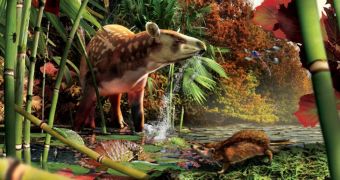Paleontologists carrying out excavations in British Columbia, Canada, claim to have discovered the fossilized remains of miniature hedgehogs and tapirs that roamed the Earth about 52 million years ago, during the Eocene Epoch.
In a paper in the Journal of Vertebrate Paleontology, the researchers who found and analyzed these creatures' remains explain that the recently discovered species lived during one of Earth's warmest periods, long after the demise of the dinosaurs.
The newly identified hedgehog species is now known to the scientific community as Silvacola acares, which translates as “tiny forest dweller.” By the looks of it, individuals belonging to this species had an average body length of 2 to 2.5 inches (5 to 6.3 centimeters).
The ancient tapir species, dubbed Heptodon, was not all that impressive size-wise either. As Dr. Jarlyn Eberle explains, “Heptodon was about half the size of today's tapirs, and it lacked the short trunk that occurs on later species and their living cousins.”
“Based upon its teeth, it was probably a leaf-eater, which fits nicely with the rainforest environment indicated by the fossil plants at Driftwood Canyon,” the University of Colorado researcher adds, as cited by EurekAlert.
Interestingly enough, researchers say the site in the Driftwood Canyon Provincial Park they are now exploring has until now yielded no other mammalian remains except for the ones left behind by Silvacola acares and Heptodon.

 14 DAY TRIAL //
14 DAY TRIAL //